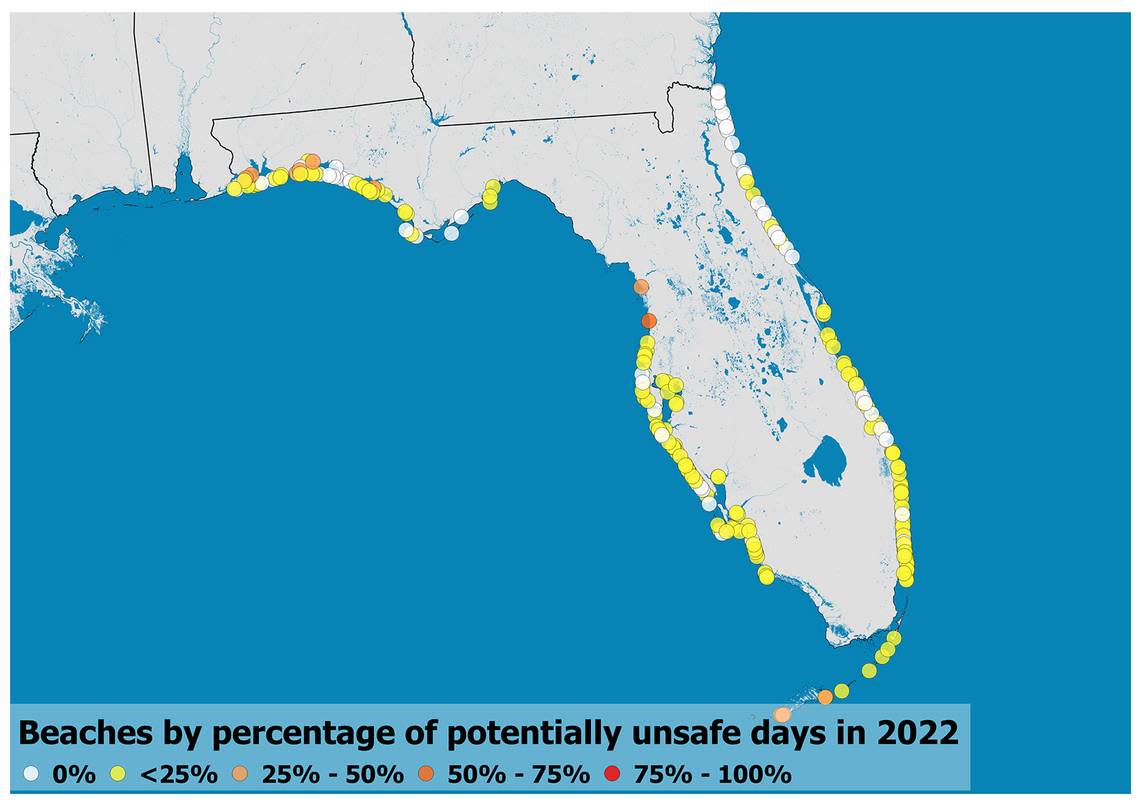Most state beaches had unsafe poop bacteria, report says. How did South Florida fare?
Tourists from across the world flock to Florida for its warm weather and beaches. But if you plan on hitting one of the Sunshine State’s popular beaches for some fun in the sun and swimming anytime soon — beware.
A report unveiled in July found that 70% of the 244 beaches tested in Florida had potentially unsafe levels of fecal indicator bacteria on at least one occasion, according to Environment America.
READ MORE: Miami Beach canal’s poop pollution is off the charts. It’s been that way for years

While half of the beaches tested around the country were potentially unsafe, 85% of those along the Gulf Coast were possibly contaminated, according to the report.
How does this happen?
Bacteria can quickly build up in beaches from sewage overflows, stormwater pollution and even farm animal poop, according to the report. Three trends have compounded the risk of this type of pollution: Development, outdated sewage systems and factory farming.
Sewage, however, is among the most dangerous because it also contains viruses and parasites.
How can this put me at risk?
Swimming in contaminated water can cause a plethora of health issues: Stomach sickness, breathing problems, ear and eye infections and skin rashes, according to the report.
Each year, the U.S. sees about 57 million cases swimming-related illnesses — though the vast majority go unreported.
What South Florida beaches tested unsafe?
▪ South Beach in Key West tested unsafe 68% of the time
▪ Higgs Beach in Key West tested unsafe 46% of the time
▪ Dubois Park in Jupiter tested unsafe 22% of the time
▪ North Shore Ocean Terrace in Miami Beach tested unsafe 18% of the time
